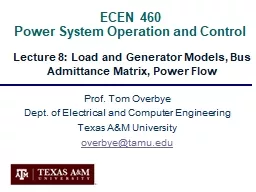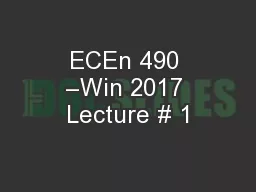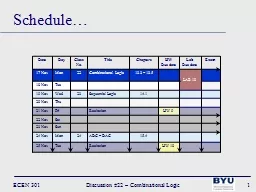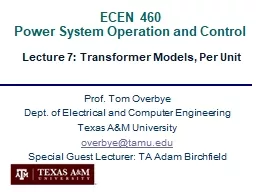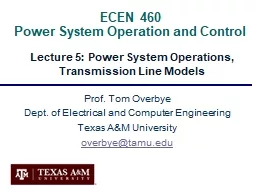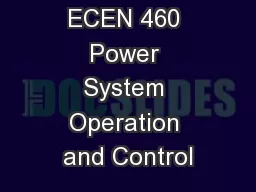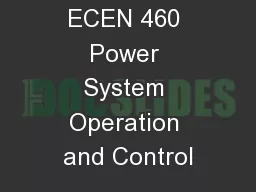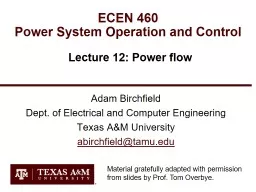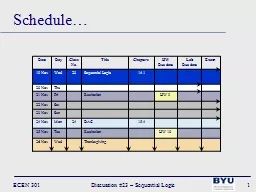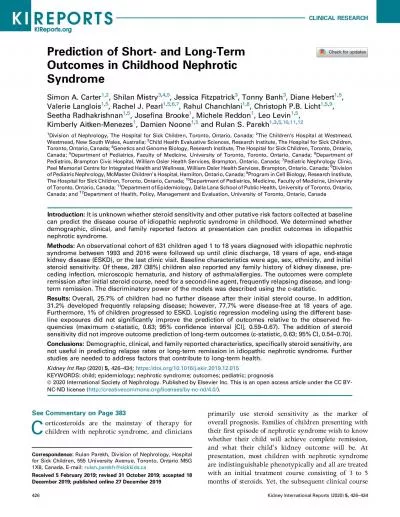PPT-ECEN 460 Power System Operation and Control
Author : lois-ondreau | Published Date : 2018-11-10
Lecture 8 Load and Generator Models Bus Admittance Matrix Power Flow Prof Tom Overbye Dept of Electrical and Computer Engineering Texas AampM University overbyetamuedu
Presentation Embed Code
Download Presentation
Download Presentation The PPT/PDF document "ECEN 460 Power System Operation and Con..." is the property of its rightful owner. Permission is granted to download and print the materials on this website for personal, non-commercial use only, and to display it on your personal computer provided you do not modify the materials and that you retain all copyright notices contained in the materials. By downloading content from our website, you accept the terms of this agreement.
ECEN 460 Power System Operation and Control: Transcript
Download Rules Of Document
"ECEN 460 Power System Operation and Control"The content belongs to its owner. You may download and print it for personal use, without modification, and keep all copyright notices. By downloading, you agree to these terms.
Related Documents

